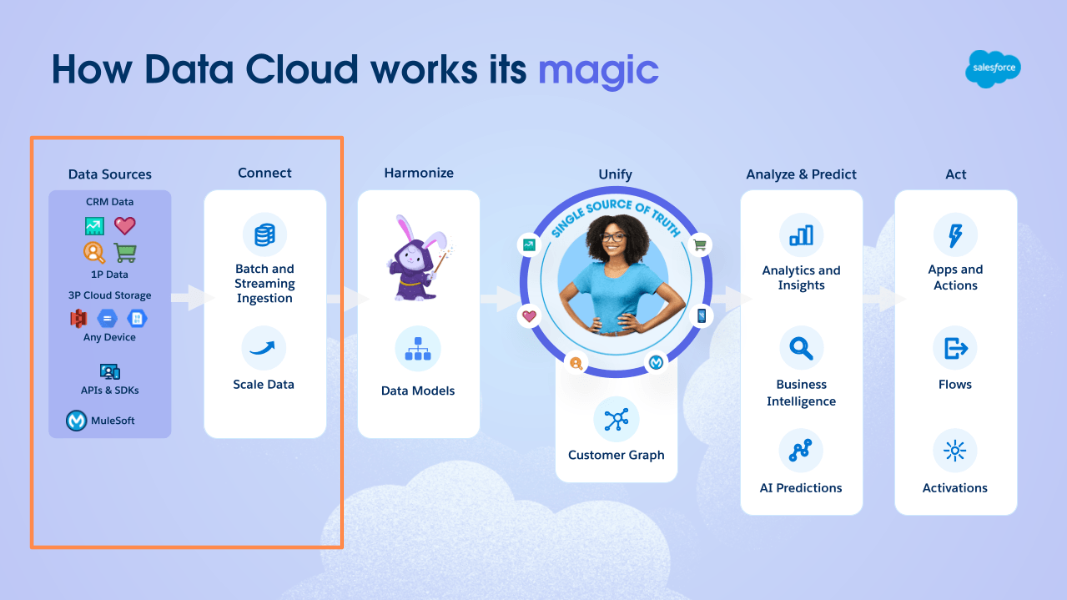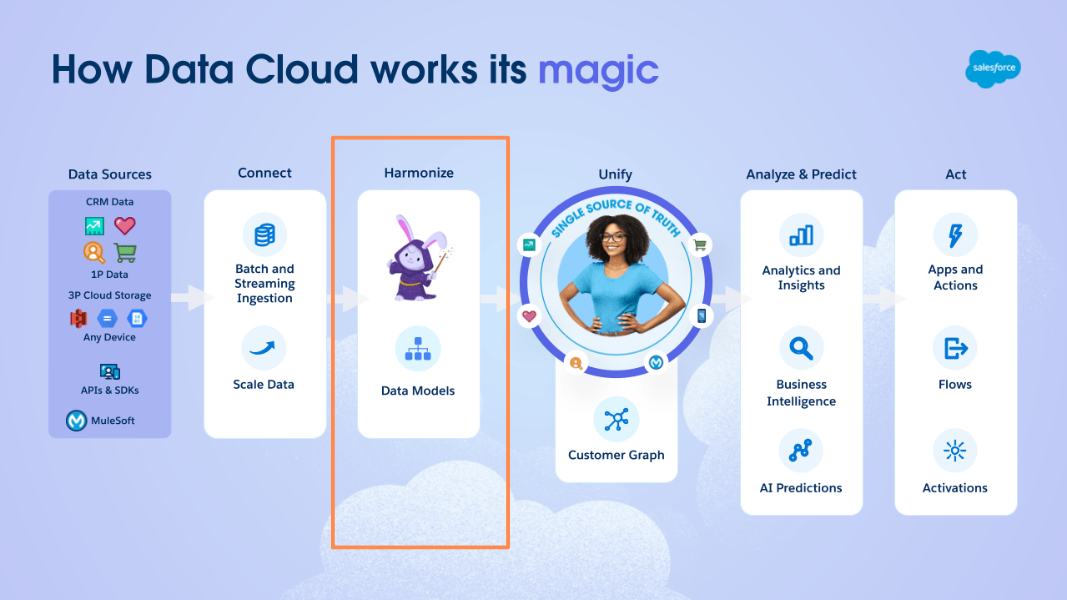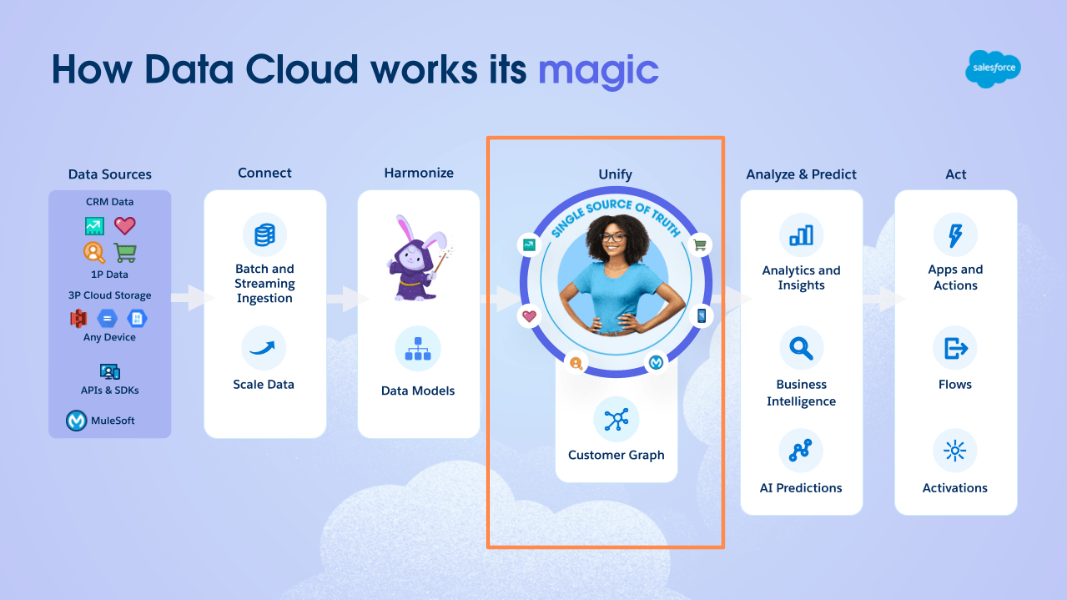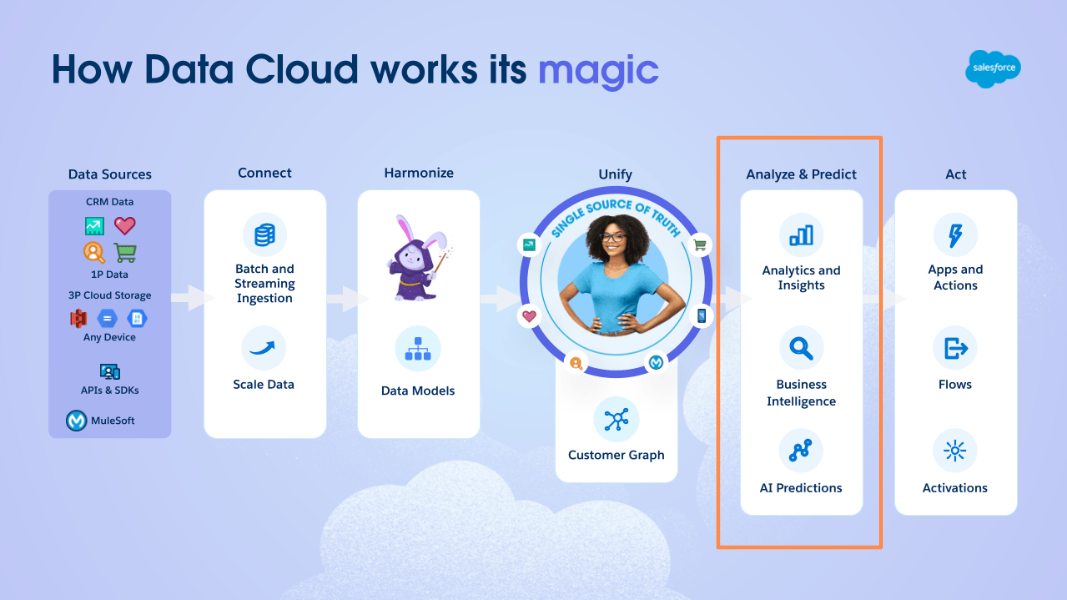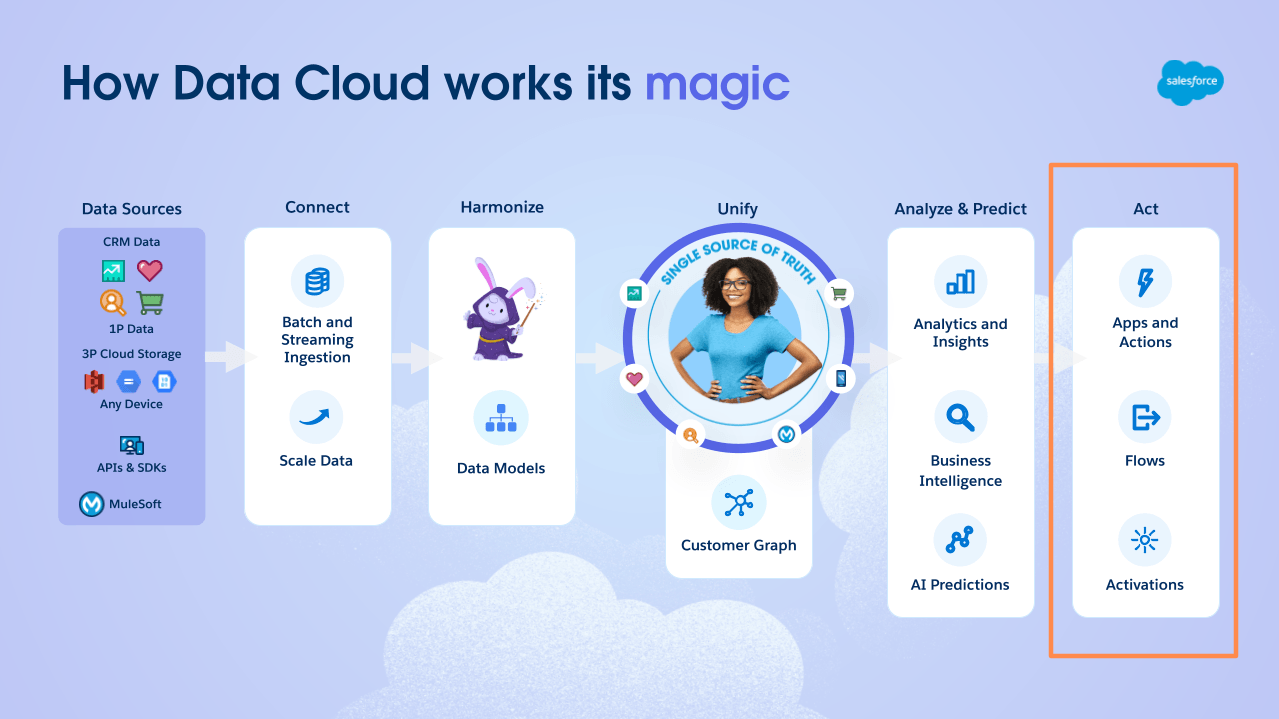What is Data Cloud?
Don’t be fooled with the Data Cloud product naming. Just because it brings together two of the most common words in the technology landscape, Salesforce’s newest offering is anything but mundane. Not only does it alleviate many of the headaches of businesses when dealing with masses of disconnected customer data, it also adds understanding, and adaptive ways to exploit this data. However, before we dive into how Salesforce Data Cloud can help your organisation, let's get an overview of what the product is all about.
So what is Data Cloud, and how can yet another platform help your business? In a nutshell, it's a platform that brings together all your customer data, unifies and harmonises it, and then creates a single view of your customer. After this unified profile is created, Data Cloud can leverage this in a multitude of ways. These include creating insights, BI analysis , AI predictions, and activating the data to be used in other channels. The options for the channels are numerous, as they could be other Salesforce applications, BI tools, Ad tech, or third party tools and platforms.

While Salesforce has been promising this elusive Customer 360 view for a long time, what makes Data Cloud particularly petertinet in today's context is that it responds to the growing challenge of companies who are struggling to manage these dozens or hundreds of data sources and make sense of them. Indeed, this is exactly the key strength of Data Cloud, its ability to ingest massive amounts of data from multiple sources, harmonise and unify them, and then leverage this data to provide insights and activations.
Let's provide a quick example to get a better understanding of this. Imagine that I want to know which customers are not engaging with my marketing channels or making purchases. With this information, customer reps can reach out to them to see if there are any issues. To achieve this, Data Cloud ingests our touchpoint engagements data from Marketing Cloud emails, our product clicks from the website, and also the purchasing history from the company CRM. Following this ingestion, the data is harmonised into a structured data model, which in turn is segmented to identify the non-engaged customers. This segment is then acted on by creating a task for the Sales Reps in Sales Cloud. To be clear, this is just one example of a myriad of possibilities, but it gives you a flavour of what is possible.
How does it work?
As you have no doubt already noticed the data follows a standard life-cycle in Data Cloud. Let's go a bit deeper and break down these phases a bit further.
Click on the arrow below to step through the different stages of the data in life-cycle in Data Cloud
